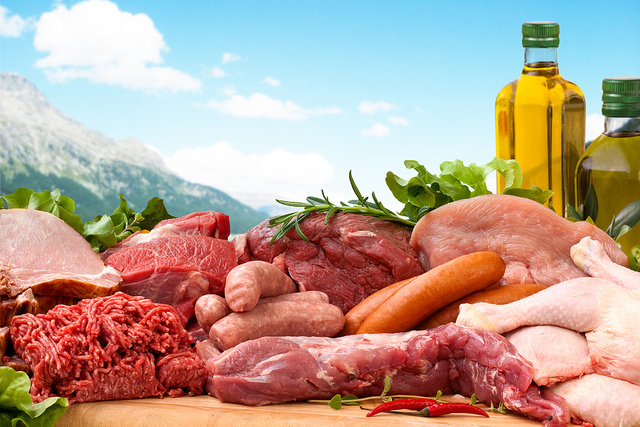



Pig outlook: ASF in Thailand, Chinese ag prices, global food prices
US lean hog futures prices took a nose-dive this week, reports livestock analyst Jim Wyckoff.
The pig traders’ perspective
February futures were trading over $10 above the CME lean hog index early this month but ended Tuesday about $2.75 over that cash equivalent price (which futures cash-settle against). Weakness reflects industry concerns over the wave of Omicron infections hurting US and/or global demand. It may also reflect worries that packers will have to continue slowing slaughter rates due to worker absenteeism, or in a worst-case scenario, plant shutdowns forced by widespread infections.
Latest US Department of Agriculture (USDA) reports, and other news
Global food prices down in December but prices for 2021 highest in a decade
Even as prices in all categories except for dairy tracked by the U.N. Food and Agricultural Organization (FAO) declined in December, the Food Price Index for all of 2021 increased to a reading of 125.7, up 28.1% from 2020 and the highest since it was at 131.9 in 2011. And their expectations for 2022 being a better year are not encouraging. “While normally high prices are expected to give way to increased production, the high cost of inputs, ongoing global pandemic and ever more uncertain climatic conditions leave little room for optimism about a return to more stable market conditions even in 2022,” said FAO Senior Economist Abdolreza Abbassian. Within the FPI for 2021 compared with 2020, cereal prices were up 27.2%, vegoils were up 65.8% to a record high, sugar prices rose 29.8%, meat prices were up 12.7% and dairy prices gained 16.9%.
USDA secretary discusses meat industry
USDA Secretary Tom Vilsack told American Farm Bureau Federation (AFBF) annual convention in Atlanta that US meat and poultry markets have been a major recent focus for the administration, and Vilsack ran through the list of actions USDA is taking. He highlighted moves to help small- and mid-sized processors expand operations and make upgrades needed to sell their products across state lines, along with support to help finance mid-supply chain needs like cold storage and mobile slaughter units. In the next 60 to 90 days, Vilsack said USDA is looking to announce the availability of $150 million to help finance new processing facilities and the expansion of existing ones. “We hope to be able to provide additional grant money in the summer for those projects and additional loan money as well,” he stated. Vilsack will travel to Colorado Friday for an event highlighting USDA efforts to expand meat processing capacity.
Labor is another key challenge facing the processing sector, and Vilsack said USDA has “put together a resource that can partner with community colleges, with unions and other organizations” to help train new workers.
Meanwhile, livestock market reform is another major focus for USDA, and Vilsack touted upcoming rulemakings under the Packers and Stockyards Act (P&SA) aimed at boosting enforcement and clarifying “when and under what circumstances there is a violation.” Legislatively, he promised to work with a bipartisan group of lawmakers on new bills to boost price discovery in cattle markets so that producers can be confident they are receiving a fair price.
Thailand finds ASF at slaughterhouse
Thai authorities says African swine fever (ASF) was detected in a sample collected at a slaughterhouse in Nakhon Pathom province, marking the country’s first official confirmation of the disease. As we reported in “Evening Report” on Monday, Thai officials started collecting blood samples from slaughterhouses amid growing speculation that an ASF outbreak was being hidden and decimating the Thai hog herd.
China's agricultural prices: -4.2% with hogs, +8.8% without them
How is farm price inflation affecting China? Dimsums blog calculated changes from major commodity prices collected over the past two years from the National Bureau of Statistics raw material price reports and the ag ministry to assess the overall picture, which it says is “quite cloudy.” Several ag commodities in China posted double-digit price increases in 2021. However, the average 42% in hog prices swamped everything else. Cotton prices had the strongest increase, a 38% rise from 2020. Eggs, corn, soymeal, soybeans and raw milk prices were up by 13% to 30%. Wheat, mutton and beef prices posted single-digit increases. Rice prices have been falling due to weak downstream demand, with many provinces launching minimum price purchases to put a floor under prices following the 2021 harvest. Chicken and peanut prices were down 2% and 5%, respectively. An overall index (weighted by value of these commodities' output) comes out to an average -4.2% price change in 2021. Hogs had an outsized influence on the index due to the huge value of their output. Recalculating the index excluding hog prices yields an 8.8% weighted average price increase, Dimsums calculates.
Tyson executives “working aggressively” to close the supply-demand gap
Tyson is raising wages and investing $450 million in automation. The company is also building “nine chicken plants, two case ready beef and pork plants, and one new bacon plant.”
The next week’s likely high-low price trading ranges:
February lean hog futures--$75.35 to $82.50, and with a sideways-lower bias
March soybean meal futures--$395.00 to $425.00, and with a sideways bias
March corn futures--$5.84 3/4 to $6.17 3/4, and a sideways bias
Latest analytical daily charts lean hog, soybean meal and corn futures










